In 2014 Ukraine, great power gamesmanship, righteous anger at a corrupt status quo, and opportunistic far-right extremists toppled the government in the Maidan Revolution. Today’s crisis in Ukraine can’t be understood without understanding Maidan.

It’s January. A defiant crowd of protesters, a jumble of bodies where far-right extremists rub shoulders with everyday people, wants the head of the elected president. They chant anti-government slogans, occupy government buildings, and carry arms — some of them makeshift melee weapons, some of them hunting rifles and Kalashnikovs. By the time it’s all said and done, the demonstrations will lead to the death and hospitalization of both protesters and police.
It’s not the Capitol riot in Washington that so horrified Americans and foreign observers in 2021. This was the Ukrainian Maidan Revolution (or Euromaidan), which right around this time eight years ago actually succeeded in toppling the country’s elected government, sending then president Viktor Yanukovych fleeing for his life to neighboring Russia.
Nearly a decade on, the 2014 Revolution of Dignity, as it’s known in Ukraine, remains one of the more widely misunderstood episodes of recent history. Yet understanding it is critical to understanding the ongoing standoff over Ukraine, which can largely be traced back to this polarizing event — depending on who you ask, an inspiring liberal revolution or a far-right coup d’état.
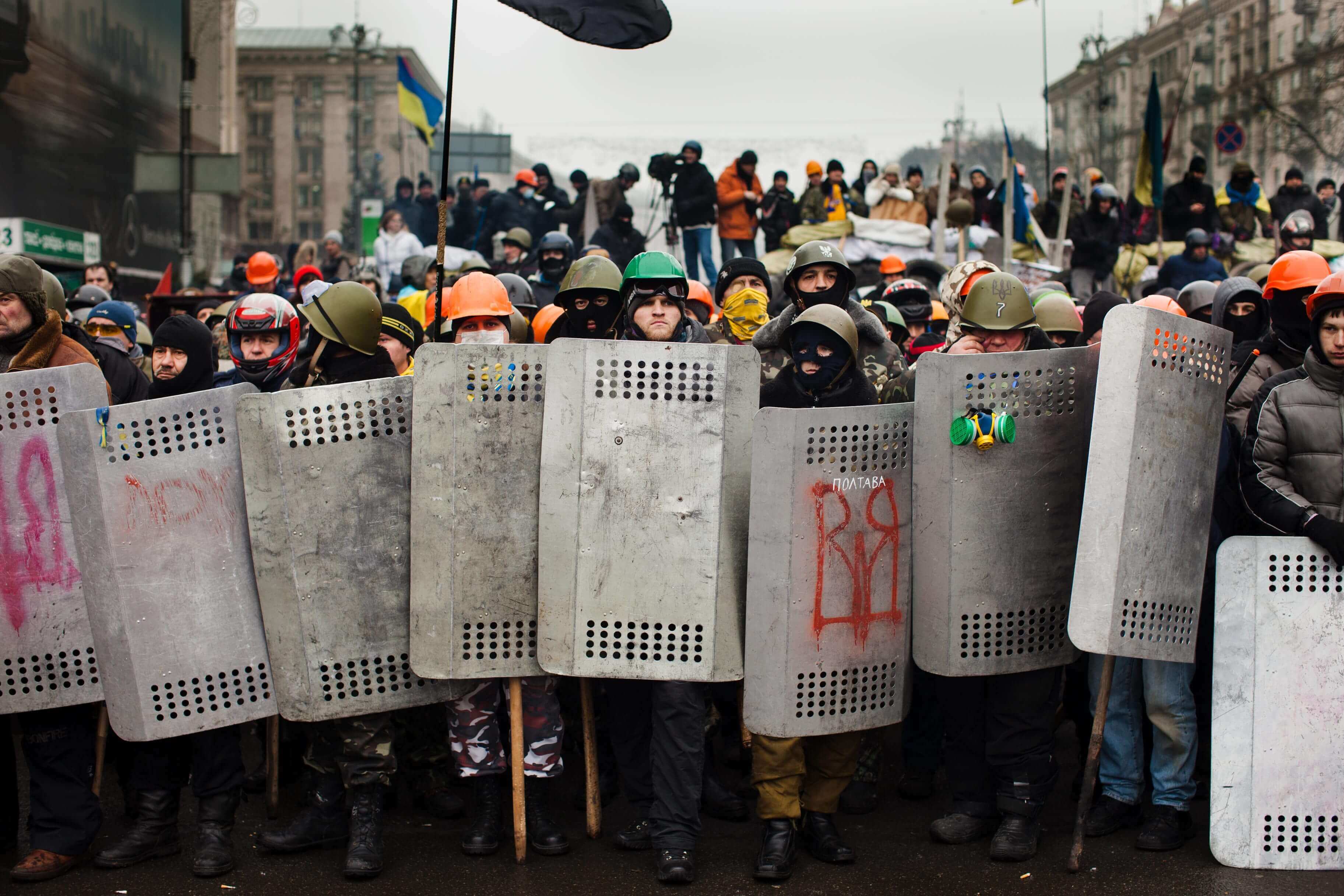
Great Power Groundwork for Rebellion
Like today’s Russia-NATO tensions more broadly, at the heart of the Maidan protests was the push by some Western governments, especially the United States, to isolate Russia by supporting the integration of peripheral parts of the former Soviet Union into European and Atlantic institutions — and Moscow’s pushback against what it saw as an encroachment on its sphere of influence.
In 2014, the man forced to navigate these tensions, Viktor Yanukovych, was taking his second crack at the Ukrainian presidency. He had first been ousted after the 2004 Orange Revolution that followed widespread charges of vote-rigging in the election that brought him to power. Before running again six years later, Yanukovych had worked to rebuild his reputation, becoming the country’s most trusted politician.

By 2010, international monitors had declared the most recent election free and fair, an “impressive display” of democracy, even. But once in power, Yanukovych’s rule was again marred by widespread corruption, authoritarianism, and, for some, an uncomfortable friendliness to Moscow, which had made no secret of its backing him in the previous election. The fact that Ukraine was starkly divided between a more Europe-friendly West and Center and a more pro-Russia East — the same lines that largely determined the election — only added to the complication.
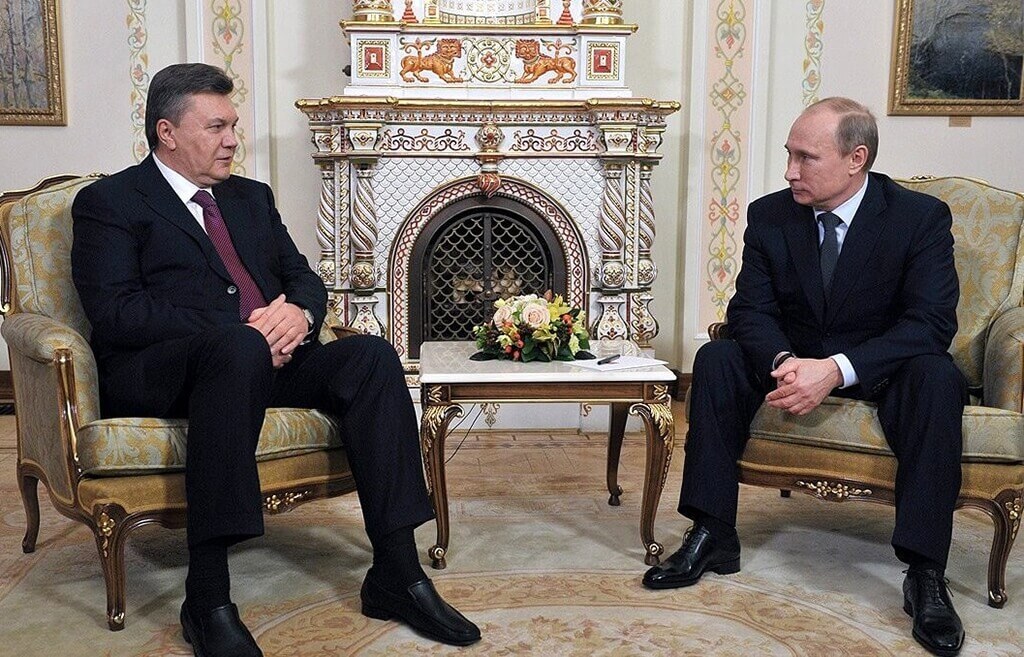
Yanukovych was in a tricky spot. Ukraine relied on cheap gas from Russia, but a plurality of the country — not, crucially, an absolute majority — still wanted European integration. His political career was caught in the same bind: with his party formally allied to Vladimir Putin’s own United Russia party, his pro-Russia base wanted to see closer relations with its neighbor; but the oligarchs who were the real reason he had gotten anywhere near the presidency were financially entangled with the West, and they feared competition to their grip on the country from across the Russian border. All the while, two geopolitical powers in the form of Washington and Moscow hoped to use these cleavages to draw the country into their respective orbits.
“Nearly a decade on, the Maidan Revolution remains one of the more widely misunderstood episodes of recent history.”
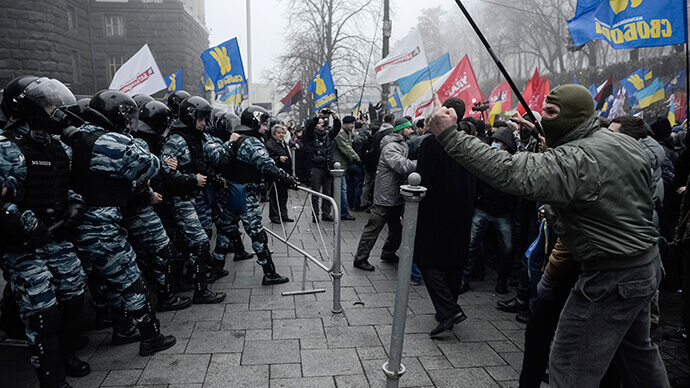
So, for four years, Yanukovych toed a fine line. He pleased his base with symbolic and cultural measures, like talk of unity or cooperation with Moscow in key industries — even if much of it went nowhere — along with more serious steps like making Russian an official language, rejecting NATO membership, and reversing his pro-Western predecessor’s move to glorify Nazi collaborators as national heroes in school curricula.
His biggest sop to Moscow, though, came early in his term, when he struck a deal letting the Russian Black Sea Fleet use Crimea as a base until 2042, in exchange for discounted Russian gas. Its hurried passage was marked by fistfights and smoke bombs in the Ukrainian parliament.
For all the charges then and since that he was a Kremlin puppet, though, there was a hard ceiling to Yanukovych’s eastward turn. His noncommittal stance on joining a Russian-led customs union of former Soviet republics, even when Putin dangled the prospect of even cheaper gas prices, frustrated Moscow. So did his outright rejection of Putin’s proposal to merge the two nations’ respective state-owned gas giants, effectively handing Moscow control of the Ukrainian pipelines it used to ferry almost all of its gas exports to Europe. In turn, Moscow refused to renegotiate the hated and one-sided 2009 gas contract between the two that had been struck by the last Ukrainian government.
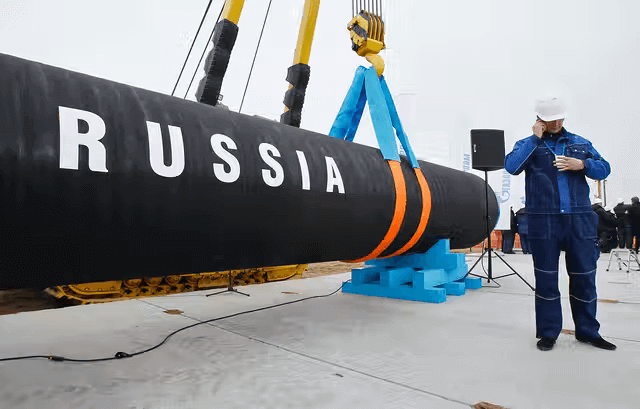
Meanwhile, Yanukovych worked with and publicly encouraged Western involvement in updating Ukraine’s natural gas infrastructure and insisted again and again that “European integration is the key priority of our foreign policy.” He kept working toward European Union membership, and to that end pursued a free trade agreement with the EU as well as the International Monetary Fund (IMF) loan the West urged him to take.
That financial lifeline came with a heavy price familiar to the many poor countries that have turned to the West for bailouts: the elimination of tariffs, a wage and pension freeze, spending cuts, and the end of gas subsidies to Ukrainian households. The grim potential of such Western-imposed austerity, on display for all to see in Greece at the time, was presumably worth it to Yanukovych if it kept Moscow’s nose out of his business.
It was all this that led the liberal Brookings Institution to describe Yanukovych’s foreign policy as “more nuanced” than his pro-Russian leanings had first suggested. It was also what wound up sealing his fate.
To halt this drift to the West, Putin performed a one-man good-cop, bad-cop routine, offering Yanukovych a no-strings-attached loan the same size as the IMF’s, while squeezing him with what amounted to a mini–trade blockade. With the EU failing to offer anything that would match the catastrophic loss of trade with Russia that Ukraine was looking at, Yanukovych made the calculated choice to go with Moscow’s offer. In November, he abruptly reneged on the EU deal, sparking the protests that would topple him from power.

Axis of Convenience
While the deal’s rejection was the spark — with protesters crying “treason” and chanting “Ukraine is Europe” — the protests were about much more. As one Kyiv resident told the press, “If the deal is signed now, I won’t leave the protest.”
Demonstrators were fed up with the nepotism and corruption that pervaded Ukrainian society — one of Yanukovych’s sons is a dentist who somehow ended up among the country’s wealthiest men, another was an MP — as well as the increasingly authoritarian nature of Yanukovych’s rule. In fact, the other major sticking point for the deal was Europe’s demand that Yanukovych’s leading rival be released from prison over trumped-up charges, which he resisted.
Demonstrators were fed up with the nepotism and corruption that pervaded Ukrainian society.
Yanukovych’s response to the movement only further doomed him, first with a brutal crackdown in November that saw riot police violently disperse protesters from Kyiv’s Maidan (or Independence Square, in Ukrainian), then ramming through a set of oppressive anti-protest laws in January. Both moves only drew more people to take part, with state violence against the protesters and their release from prison becoming, respectively, the leading motivator and demand of participants by December.
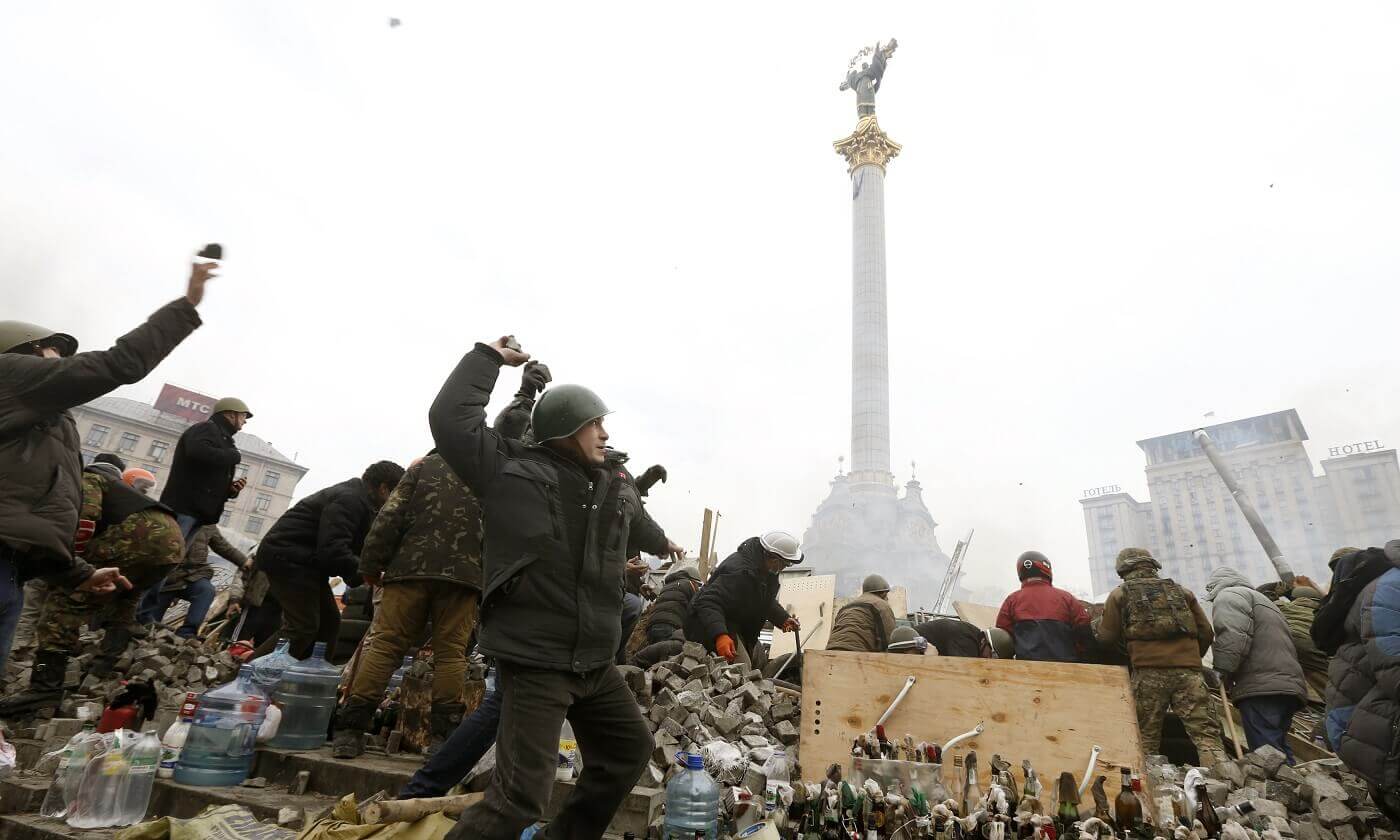
But righteous though their cause may have been, the movement’s critics had a point, too. For one thing, the Maidan protests didn’t have majority support, with the Ukrainian public split along the regional and sociocultural lines that have long defined so many of the country’s political difficulties. While the western regions — where most of the protesters came from, and which had historically been ruled by other countries, some as late as 1939 — backed the protests, the Russian-speaking East, ruled by Russia since the seventeenth century, were alienated by their explicit anti-Russian nationalism, especially only one year out from the chance to vote Yanukovych out.
Whatever one thinks of the Maidan protests, the increasing violence of those involved was key to their ultimate victory.
And they were resorting to force. Whatever one thinks of the Maidan protests, the increasing violence of those involved was key to their ultimate victory. In response to a brutal police crackdown, protesters began fighting with chains, sticks, stones, petrol bombs, even a bulldozer — and, eventually, firearms, all culminating in what was effectively an armed battle in February, which left thirteen police officers and nearly fifty protesters dead. The police “could no longer defend themselves’ from protesters’ attacks,” writes political scientist Sergiy Kudelia, causing them to retreat, and precipitating Yanukovych’s exit.
The police “could no longer defend themselves’ from protesters’ attacks,” writes political scientist Sergiy Kudelia, causing them to retreat, and precipitating Yanukovych’s exit.
The driver of this violence was largely the Ukrainian far right, which, while a minority of the protesters, served as a kind of revolutionary vanguard. Looking outside Kyiv, a systematic analysis of more than 3,000 Maidan protests found that members of the far-right Svoboda party — whose leader once complained Ukraine was run by a “Muscovite-Jewish mafia” and which includes a politician who admires Joseph Goebbels — were the most active agents in the protests. They were also more likely to take part in violent actions than any group but one: Right Sector, a collection of far-right activists that traces its lineage to genocidal Nazi collaborators.
Svoboda used its considerable resources, which included thousands of ideologically committed activists, party coffers, and the power and prominence afforded to it as a parliamentary party, to mobilize and keep the protests alive, while eventually leading the occupation of key government buildings in both Kyiv and the western regions. This was particularly the case in the western city of Lviv, where protesters took over a regional administration building that soon came to be partially controlled and guarded by far-right paramilitaries. There, they declared a “people’s council” that “proclaimed Svoboda-dominated local councils and their executive committees the only legitimate bodies in the region,” writes Volodymyr Ishchenko, fueling the crisis of legitimacy that ended in Yanukovych’s ouster.
But this was by no means limited to Ukraine’s West. Right Sector led the January 19 attacks on police in Kyiv that even opposition leaders criticized, with one protester saying the far-right bloc had “breathed new life into these protests.” Andriy Parubiy, the unofficial “commander of Maidan,” founded the Social-National Party of Ukraine — a barely even winking allusion to Nazism — that later became Svoboda. By January 2014, even NBC was admitting that “right-wing militia-type toughs are now one of the strongest factions leading Ukraine’s protests.” What was meant to be a revolution for democracy and liberal values ended up featuring ultranationalist chants from the 1930s and prominent displays of fascist and white supremacist symbols, including the American Confederate flag.
January 6 in February
The far right, of course, cared nothing for democracy, nor did it have any love for the EU. Instead, the popular uprising was an opportunity.
Dmytro Yarosh, the Right Sector leader, had urged his compatriots in 2009 to “start an armed struggle against the regime of internal occupation and Moscow’s empire” if pro-Russian forces took control. As early as March 2013, Tryzub, one of the organizations that formed Right Sector, had called for the Ukrainian opposition to move “from a peaceful demonstration to a street-revolutionary plane.”
They may also have played an even more sinister role in the events that unfolded. One enduring mystery of the Maidan Revolution is who was behind the February 20 sniper killings that set off the final, most bloody stage of protests, with accusations against everyone from government forces and the Kremlin to US-backed mercenaries. Without precluding these possibilities, there’s now considerable evidence that the same far-right forces who piggybacked on the protesters’ cause were also at least among the forces firing that night.
At the time, men resembling protesters had been witnessed shooting from protester-controlled buildings in the capital, and multiple Maidan medics had said the bullet wounds in police and protesters looked to have come from the same weapon. A Maidan protester later admitted to killing two officers and wounding others on the day, and crates of empty Kalashnikov bullets were found in the protester-occupied Ukraina Hotel, the same place a decorated military pilot and anti-Russian resistance hero later said she had seen an opposition MP leading snipers to. The government’s investigation, meanwhile, which focused only on the protester murders, started out filled with serious flaws and irregularities.
The University of Ottowa’s Ivan Katchanovski has analyzed evidence that’s come out in the course of the investigation and trial into the murders. According to Katchanovski, a majority of wounded protesters testified they either saw snipers in protester-controlled buildings or were shot by bullets coming from their direction, testimony backed by forensic examinations. Closure on the matter is unlikely, though, since the post-Yanukovych interim government, in which leading far-right figures took prominent positions, swiftly passed a law giving Maidan participants immunity for any violence.The far right cared nothing for democracy, nor did it have any love for the EU. Instead, the popular uprising was an opportunity.
For a brief period, it looked like the spiraling crisis might actually be resolved peacefully, when Yanukovych and opposition parties signed a Europe-brokered deal the next day on February 21, agreeing to scale back the president’s powers and hold new elections that December. But the deal was met with outrage from the increasingly militant street movement.
Thousands stayed in Maidan demanding Yanukovych’s exit, booing the now apologetic opposition leaders for signing the agreement. Protesters decried the deal as not enough, some gathering near Parliament, and demanded Yanukovych’s resignation and prosecution. They cheered as an ultranationalist threatened an armed overthrow if Yanukovych wasn’t gone by morning. (That speaker was later elected an MP, where he joined a far-right party and made a habit of physically assaulting his opponents).
“If I was [President Yanukovych], I would try and flee the country,” said one protester in Lviv, where hundreds had gathered in the wake of the deal’s signing. “Otherwise, he’ll end up like [Muammar] Gaddafi or with a life sentence or the electric chair. He will not leave the country alive.”
Panic gripped the capital. Rumors swirled that the hundreds of firearms seized days earlier by protesters raiding police stations in Lviv were on their way to Kyiv for a final, bloody stage to the insurrection. When Yanukovych’s own party voted to order troops and police to their barracks, both security forces and, subsequently, Yanukovych flew the city, expecting bloodshed.
The day after the deal was signed, Parliament ratified what was effectively an insurrection, voting to strip the presidency from Yanukovych, to the praise of the US ambassador. Protesters stood outside Parliament and attacked an MP from Yanukovych’s party, before overrunning the presidential palace. A prominent rabbi urged Jews to leave the city and even the country, while the Israeli embassy advised them to stay inside their homes.
Free Market Democracy Promotion
There’s one more critical piece to the Euromaidan puzzle: the role of Western governments.
For decades, Washington and allied governments have pursued their strategic and economic interests under the cover of promoting democracy and liberal values abroad. Sometimes that’s meant funneling money to violent reactionaries like the Nicaraguan contras, and sometimes it’s meant supporting benign pro-democracy movements like those in Ukraine.
“External actors have always played an important role in shaping and supporting civil society in Ukraine,” Ukrainian scholar Iryna Solonenko wrote in 2015, pointing to the EU and the United States, through agencies like the National Endowment for Democracy (NED) and US Agency for International Development (USAID), whose Kyiv headquarters were in the same compound as the US embassy. “One can argue that without this external support, which has been the major source of funding for Ukrainian civil society since independence, Ukrainian civil society would not have become what it now is.”
This was the case in the 2004–5 Orange Revolution, where foreign NGOs changed little about Ukraine’s corruption and authoritarianism, but achieved the crucial goal of nudging Ukraine’s foreign policy westward. As the liberal Center for American Progress put it that year:
Did Americans meddle in the internal affairs of Ukraine? Yes. The American agents of influence would prefer different language to describe their activities — democratic assistance, democracy promotion, civil society support, etc. — but their work, however labeled, seeks to influence political change in Ukraine.
US officials, unhappy with the scuttled EU deal, saw a similar chance in the Maidan protests. Just two months before they broke out, the NED’s then president, pointing to Yanukovych’s European outreach, wrote that “the opportunities are considerable, and there are important ways Washington could help.” In practice, this meant funding groups like New Citizen, which the Financial Times reported “played a big role in getting the protest up and running,” led by a pro-EU opposition figure. Journalist Mark Ames discovered the organization had received hundreds of thousands of dollars from US democracy promotion initiatives.
While it may be a long time before we know its full extent, Washington took an even more direct role once the turmoil started. Senators John McCain and Chris Murphy met with Svoboda’s fascist leader, standing shoulder to shoulder with him as they announced their support to the protesters, while US assistant secretary of state Victoria Nuland handed out sandwiches to them. To understand the provocative nature of such moves, you only need to remember the establishment outrage over the mere idea Moscow had used troll farms to voice support for Black Lives Matter protests.
Later, a leaked phone call showed Nuland and the US ambassador to Ukraine maneuvering to shape the post-Maidan government. “Fuck the EU,” Nuland told him, over its less aggressive intervention into the country. “Yats is the guy who’s got the economic experience,” she said, referring to opposition leader Arseniy Yatsenyuk, who backed the devastating neoliberal policies demanded by the West. You can probably guess who became prime minister in the post-Maidan interim government.
It’s an overstatement to say, as some critics have charged, that Washington orchestrated the Maidan uprising. But there’s no doubt US officials backed and exploited it for their own ends.
Revolution Unfulfilled
Much as in 2004, the outcome of the Maidan Revolution, through no fault of the majority of well-meaning, frustrated Ukrainians who had helped drive Yanukovych out, was neither peace and stability, nor a move toward liberal values and democracy. In fact, almost all of the protesters’ demands have gone unfulfilled.
The same far right that had led the charge in toppling Yanukovych, including Parubiy, found themselves with plum roles in the interim government that followed, while the winner of the 2014 snap presidential election — Ukraine’s seventh-richest man, Petro Poroshenko — had a history of corruption. His interior minister soon incorporated the Azov Regiment, a neo-Nazi militia, into Ukraine’s National Guard, with the country now a Mecca for far-right extremists around the world, who come to learn and get training from Azov — including, ironically, Russian white supremacists who were hounded from their country by Putin.
Despite far-right parties ultimately losing seats in Parliament, ultranationalist movements successfully shifted the country’s politics to the extreme right, with Poroshenko and other centrists backing measures to marginalize the speaking of Russian and glorify Nazi collaborators. Even so, far-right candidates have entered Parliament on non-far-right tickets, and extremists like former Azov commander Andriy Biletsky have taken high-ranking law enforcement positions. While far-right vigilantism spread through the country, Poroshenko himself granted citizenship to a Belarusian neo-Nazi and engaged in some borderline anti-Semitism of his own.There’s no doubt US officials backed and exploited Euromaidan for their own ends.
Little to nothing has changed about Ukrainian corruption or authoritarianism, under either Poroshenko or current president Volodymyr Zelensky, elected in 2019 as an outsider change agent. Each has governed like an autocrat, using their powers to go after political opponents and weaken dissent, and have been embroiled in personal enrichment scandals that remain endemic to the Ukrainian political class.
Not that it stopped either from being feted by Washington and flooded with American support. In fact, this new imperial patron has only added to these problems, with the current US president’s family being personally embroiled in one of the country’s major corruption scandals, before using his position to install a markedly corrupt prosecutor general.
Meanwhile, Ukraine’s been embroiled in a mini–civil war since Maidan. After Putin moved to secure the Crimean naval base from NATO control, using the Russian military presence and a dubious referendum to illegally annex the majority-Russian region shortly after Yanukovych’s exit, pro-Russian separatists began mobilizing in the country’s east, first into protest, then into armed groups. After the interim government sent armed forces to put down the rebellion, Moscow sent its own troops in, and the entire region has been a deadly powder keg ever since.
But one crucial thing did change. With Yanukovych out, the interim government and Washington’s handpicked prime minister signed the EU deal whose rejection had started it all, solidifying Ukraine’s move to the West, and ushering in the brutal austerity measures demanded by the IMF. Over the years, Yanukovych’s successor signed off on a round of privatization, raised the pension age, and slashed gas subsidies, urged on by then vice president Joe Biden. Unsurprisingly, angry Ukrainians both voted with their feet and threw him out in a landslide.
Shadows and Lies
The 2014 revolution in Ukraine was an enormously complicated affair. Yet for most Western observers, many of its basic, well-documented facts have been either excised to push a simplistic, black-and-white narrative, or cast as misinformation and propaganda, like the crucial role of the far right in the revolution.
In truth, the Maidan Revolution remains a messy event that isn’t easy to categorize but is far from what Western audiences have been led to believe. It’s a story of liberal, pro-Western protesters, driven by legitimate grievances but largely drawn from only one-half of a polarized country, entering a temporary marriage of convenience with the far right to carry out an insurrection against a corrupt, authoritarian president. The tragedy is that it served largely to empower literal neo-Nazis while enacting only the goals of the Western powers that opportunistically lent their support — among which was the geopolitical equivalent of a predatory payday loan.
It’s a story tragically common in post–Cold War Europe, of a country maimed and torn apart when its political and social divisions were used and wrenched further apart in the tussle of great power rivalry. And the Western failure to understand it has led us to a point where Washington continues to recklessly involve itself in a place full of shadowy motives, shifting allegiances, and where little is what it seems on the surface.
Western involvement helped bring the country to this crisis. There’s little reason to think it’ll now get it out.
ABOUT THE AUTHOR
Branko Marcetic is a Jacobin staff writer and the author of Yesterday’s Man: The Case Against Joe Biden. He lives in Chicago, Illinois.
Original Source: https://jacobinmag.com/2022/02/maidan-protests-neo-nazis-russia-nato-crimea
Danny Boy Limerick
Danny Boy Limerick is viewer funded only.
If you appreciate the content of my website and would like to help keep me going,
please consider “tipping” me for my time invested in this project.
Thanks !
Website + Resources
@DannyBoyLimerick
Telegram: https://t.me/DannyBoyLimerickLive
The Shill Hunters (Group Chat) – https://t.me/TheGoodPeopleFightingGoodFight
New You Tube Channel – https://www.youtube.com/channel/UC7GO_BP5py-JI76LWudOWMA/
Facebook Page DBL: https://www.facebook.com/dannyboylimerick2.0 (Censored Close To Unpublishing)
Facebook Page DBL 2.0: https://www.facebook.com/DannyBoyLimerick (Censored – Restricted Shadow Banned)
FB Profile: https://www.facebook.com/DBLProjectCounterintel (Banned Multiple Restrictions)
FB Profile: https://www.facebook.com/DannyBoyLimerickActive (Restricted For 90 Days)
Twitter: https://twitter.com/DannyBLimerick
Mewe: https://mewe.com/i/dannyboylimerick
The Shills Hunters: https://mewe.com/join/theshillhunters (Shill Hunters Only)
Gettr: https://gettr.com/user/dannyboyeire
Gab: https://gab.com/DannyBoyLimerick
Minds: https://www.minds.com/register?referrer=LaurelGreenNeedleDan
PocketNet (Bastyon): https://pocketnet.app/dannyboylimerick?ref=PFD6mB3CHhXq7AStVgi5XpTQ1whaSJb2bn
Donate: https://dannyboylimerick.website/donate/
Website: http://DannyBoyLimerick.website
Landing Page (Linktree)
Hash: #opWeCanSeeYou
🇮🇪💚☘️
#OpWeCanSeeYou #DannyBoyLimerick #TheMostCensoredManInIreland
I am a one man operation that has been trying to filter through all the “New Aged” worldwide propaganda preached to the truth community / freedom fighters through fake “truth gurus/mentors”, so that i can bring you the “actual” truth. I have been doing this since 2016 and went mainstream in 2018.
These “wolves in sheeps clothing” are “planted” within the community as “Gatekeepers” to, sow division, utilize delay/deflect tactics misinform and mislead the “free-thinkers” or anyone that opposes the “Occultist Hidden Hand” or “Shadow Government” , straight to the slaughterhouse.
I would like to say thanks to all the fellow “watchmen”, “Shill Hunters” and “Genuine truthers/researchers/free thinkers” working tirelessly around the clock out there, putting yourself in the trenches, laying it all on the line by sounding the alarm over the last several years, sacrifices have been made, reputations tarnished, online friends and family members have been lost and lots more put on the back burner. You are the real warriors of the so called “End Times”. The unsung Heroes.
Nobody said it was going to be easy. Keep On Fighting The Good Fight.
FAIR USE NOTICE:
This site contains some copyrighted material the use of which has not always been specifically authorized by the copyright owner.
We are making such material available in our efforts to expose and advance the understanding of the issues covered here.
We believe this constitutes a ‘fair use’ of any such copyrighted material.





Greetings, your site and work is remarkable. Yet no mention of the plane. I think that from the point of view of being on the ground that this is worth mentioning. All the outrageous deception, and to my mind this is the master deception, the root. Many thanks for your work. Douglas
On Mon, 28 Feb 2022, 4:29 pm Danny Boy Limerick, wrote:
> Danny Boy Limerick posted: ” In 2014 Ukraine, great power gamesmanship, > righteous anger at a corrupt status quo, and opportunistic far-right > extremists toppled the government in the Maidan Revolution. Today’s crisis > in Ukraine can’t be understood without understanding Maidan. Pro” >
I have plenty of more in the pipeline, It seems, I am tasked with the waking up of an entire nation here, over this neck of the woods, as it appears that I am one of the only one here on ireland Inc speaking out against the Ukrainian/Russian Zionist Coup. 90% of our country right now have been completely brainwashed by mainstream media and steered and controlled by the Hard Left and their minions. Ireland truly is rotten to the core. The most corrupt little country in the world. I would be happy to hear or see anything else that you have on the Ruissian/Ukraine Crisis/Psyops.
Kindest
Dan
I myself have nothing only the fact of the plane.
Every thing that occurs has a base. The basis or foundation.
If one has no idea whereone is then no true foundation in mind.
As has been said truth requires no belief.
The many arms of the rabbit whole, the many tributaries of the river, yet only one truth. The ground and the sky. The seasons and cycles. The true motive power behind all seen.
It’s a vast outrageous affair we find ourselves in. The corruption of the world is complete and the mind numbing garbage masquerading as intelligence and information is beyond appalling, yet none of this is for no reason. Smoke screens abound, false trails to box canyon utopias.
What causes a person to look deeper.
Their own inner sense I suppose. Thanks for introducing me to Tom Barnett.
All the best.
Douglas